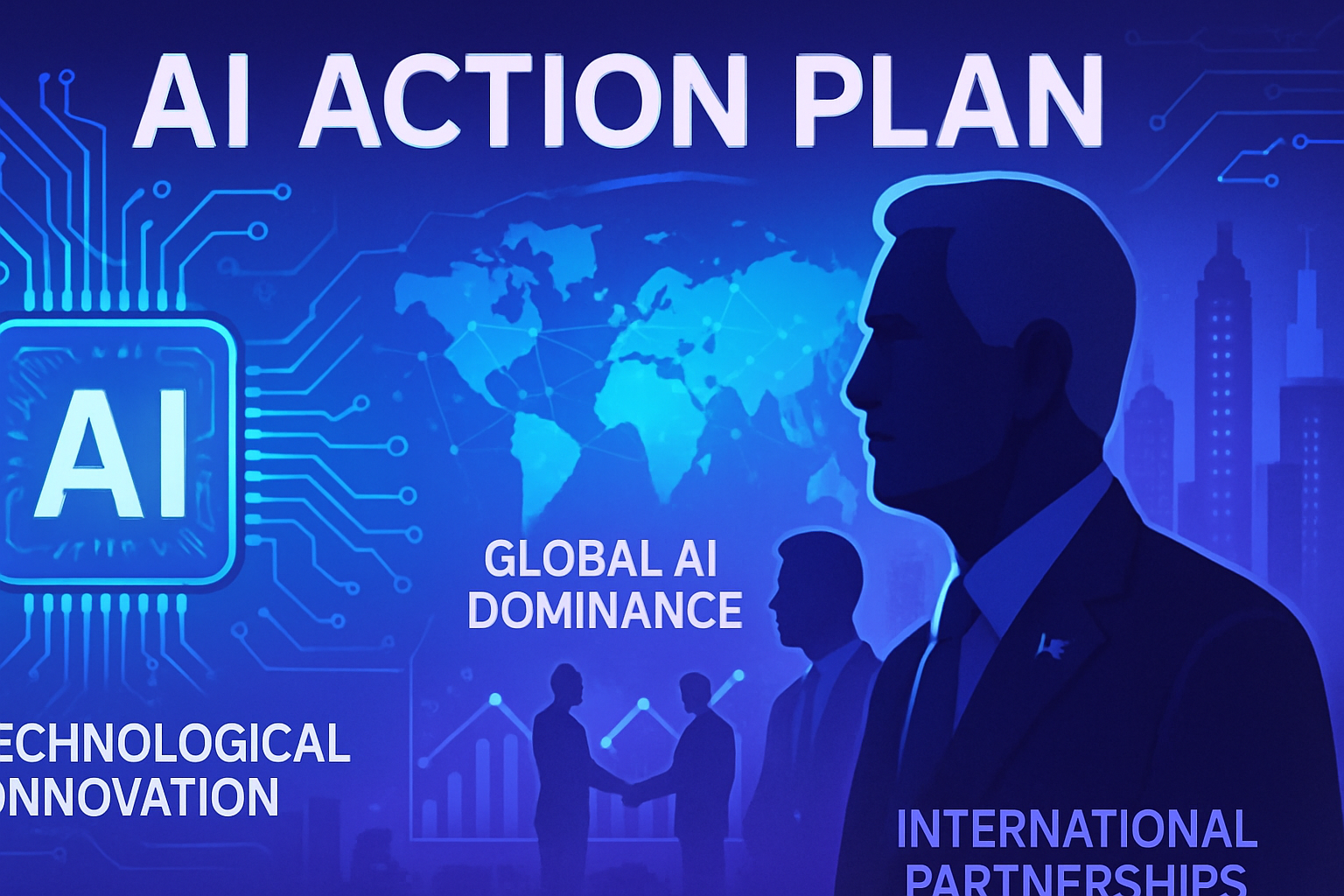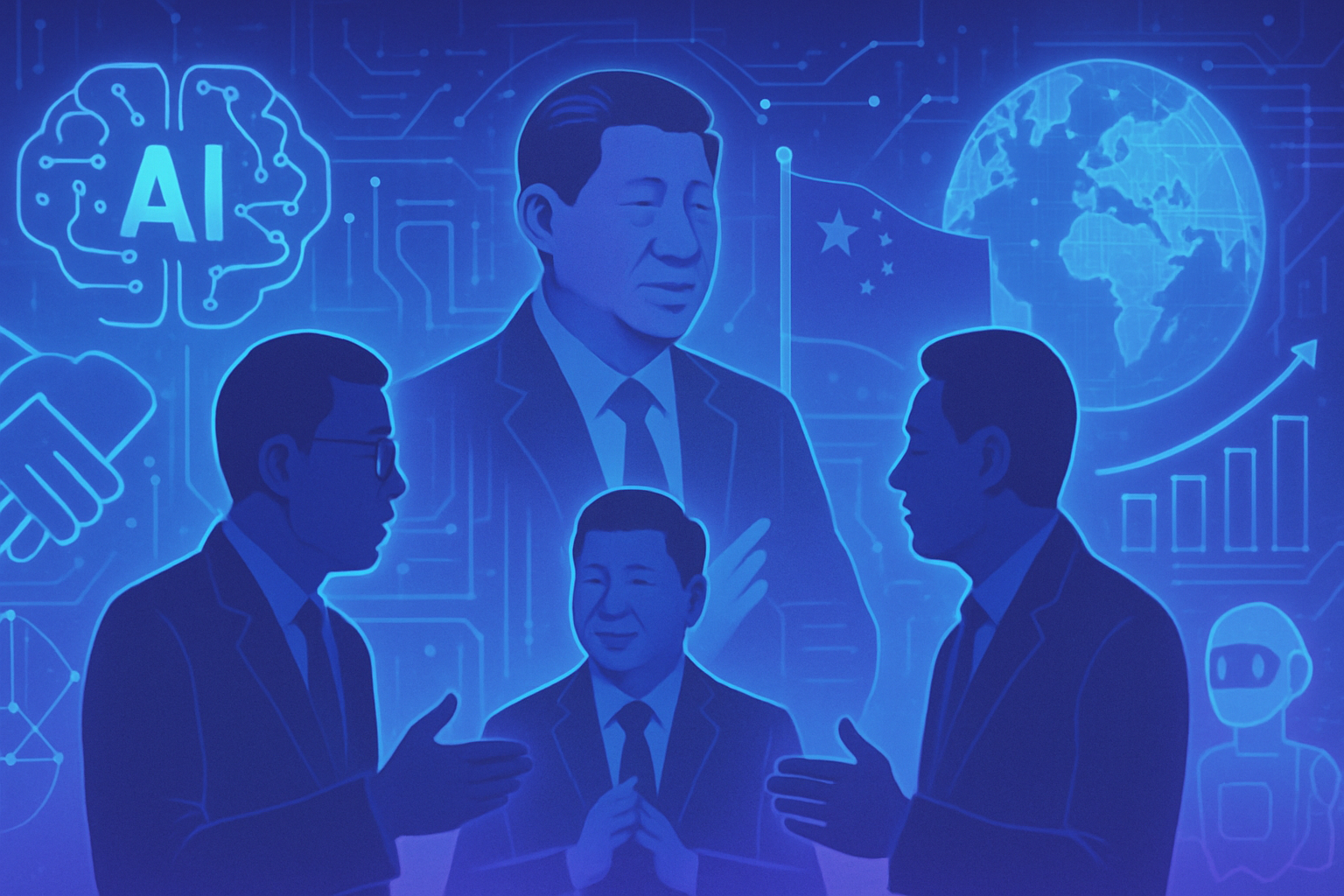The technological future of the United States is playing out in the field of AI, in a global struggle for supremacy. This ambitious project aims to establish undisputed dominance in the sector, both nationally and internationally. The initiative is based on fundamental pillars: *promoting innovation*, *strengthening infrastructure* and *imposing American preeminence* on the global stage. The strategy unfolds as a national security imperative, prompting rapid and effective mobilization. The stakes go beyond the economic framework to embrace a geopolitical vision, shaping the standards and values of tomorrow. In the face of unprecedented challenges, America must ensure its leadership while navigating a complex and controversial technological landscape.
The AI Action Plan, recently unveiled by the White House, positions the coming decade as a decisive period for the United States in the technological race. The text expresses a national imperative, emphasizing that dominance in AI is a matter of national security. The preamble written by the former president highlights the need to maintain an undisputed technological preeminence.
A three-pronged strategy
This strategic plan rests on three main axes. First, a resurgence of national innovation is required, accompanied by the development of a colossal infrastructure to support this dynamic. Finally, the United States must project its power on an international scale to ensure its predominance.
Pillar I: Support for the private AI sector
The first pillar of the plan reaffirms the desire to facilitate private innovation without regulatory constraints. It directly addresses the burdens imposed by the previous administration, described as “costly.” The underlying philosophy emphasizes the necessity of allowing innovators to operate freely. Vice President JD Vance states that excessive regulations risk “paralyzing” one of the most promising contemporary technological fields.
The government intends to use federal funds as leverage, threatening to withdraw funding from states that would establish regulations deemed too strict. This pillar also addresses cultural issues, stipulating that taxpayer-funded AI systems must embrace American values.
Pillar II: Strong infrastructure for the future
The second pillar addresses the material requirements of this technological revolution. It is pointed out that AI requires a significant increase in energy capacity. The national plan under the slogan “Build, Baby, Build!” aims to erect data centers, relocate semiconductor manufacturing, and create an electrical network adapted to the IOT.
Efforts to accelerate environmental approvals and renovate the country’s energy supply are highlighted. Among other actions, a return to U.S. soil for chip production is being considered, with a commitment to orient the CHIPS program towards tangible outcomes. At the same time, a training effort for a new generation of engineers and technicians is essential to support this emerging infrastructure.
Pillar III: Dominate on the international stage
The third pillar aims to shape the world in the American image. The goal is for the entire technological chain of the United States — from components to software — to become the globally recognized standard for AI. An energetic export strategy is deployed to equip allies with American technologies, aiming to counter the growing influence of China.
This new foreign policy also involves reinforcing against Chinese influence in international organizations like the United Nations, considered vectors of restrictive regulations. The administration advocates a more vigilant approach to security, with enhanced controls over advanced technologies.
Reactions and tensions in the sector
This plan has sparked mixed reactions. Within an industry already plagued by tensions, Sam Altman, CEO of OpenAI, has warned against the disruptive power of AI, citing job losses and threats to national security. Altman emphasizes the urgency of mitigating AI-related risks, calling it the imminent “fraud crisis” fueled by these technologies.
A cautious acceptance also comes from the organization Americans for Responsible Innovation (ARI), which finds resonance in some proposals with its own concerns. Limits on exports and more research on AI safety are considered relevant. However, the initiative to penalize states that establish their own safety rules is deeply divisive.
Brad Carson, president of ARI, expressed concerns about this authoritarian approach, stressing that public trust in AI systems is essential. Enhancing transparency and public protections should be at the heart of concerns for the future.
Legal and ethical considerations
The plan also addresses the ethical implications of AI, particularly regarding the risks of malicious use, such as cybercrime or bioweapons. A national response is necessary to anticipate and manage these potential threats, thereby ensuring security and accountability in the development of a technological future.
Debates are intensifying around these issues… You can find more information on recent advances in the field of AI, as well as ethical reflections on the subject, by consulting articles like this article on Alibaba or the one about copyright in AI here.
FAQ on the AI action plan
What is the AI action plan proposed by the U.S. government?
The AI action plan is a strategy implemented by the U.S. government aimed at strengthening the position of the United States in the field of artificial intelligence, focusing on innovation, infrastructure, and the projection of American power globally.
What are the main objectives of this action plan?
The main objectives include accelerating AI innovation, building a robust infrastructure to support this innovation, and reinforcing American technological dominance internationally against competing nations like China.
How will the AI action plan affect private enterprises?
The plan aims to support private enterprises by reducing regulations considered burdensome, allowing innovators to develop their technologies without excessive obstacles.
What new regulations regarding AI are included in this plan?
The plan proposes to eliminate regulations deemed too heavy by the current administration and to ensure that AI systems funded by public funds reflect objective American values.
How does this plan contribute to the national security of the United States?
By establishing technological dominance in AI, the plan aims to enhance national security by setting precedents on the ethical use of AI and countering external threats, particularly those from China.
What specific initiatives are proposed to build the infrastructure needed for AI?
The plan includes the construction of new data centers, repatriation of semiconductor manufacturing, and modernization of the energy grid to meet the growing energy demand of AI technologies.
What role do the United States play in the context of international AI policy?
The United States plans to promote its AI technologies abroad while opposing international regulations that could harm innovation, in order to establish American standards as a global benchmark.
How does the government plan to integrate a security approach regarding AI risks?
The plan acknowledges the risks associated with AI, such as cybercrime, and calls for a national mobilization to anticipate and counter these potential threats, while ensuring proactive regulation.
What are the reactions of industry players to this AI action plan?
While some industry players, such as the CEO of OpenAI, have expressed concerns about the risks associated with AI, other groups, like Americans for Responsible Innovation, have welcomed some initiatives while fearing excessive repression of state regulations.






